5 - Moc - Telekommunist Manifesto
Created by Andreas Gajdošík

efektivní využití výpočetního výkonu
From a technological standpoint, distributed and peer-to-peer technologies are far more efficient than Web 2.0 systems. Making better use of network resources by using the com- puters and network connections of users, peer-to-peer avoids the bottlenecks created by centralized systems. It also allows content to be published with less infrastructure, often no more than a computer and a consumer internet connection. P2P systems do not re- quire the massive data centers of sites such as YouTube. Distributed systems also tend to have greater longevity.
repetetivní stahování dat
Ekologické dopady
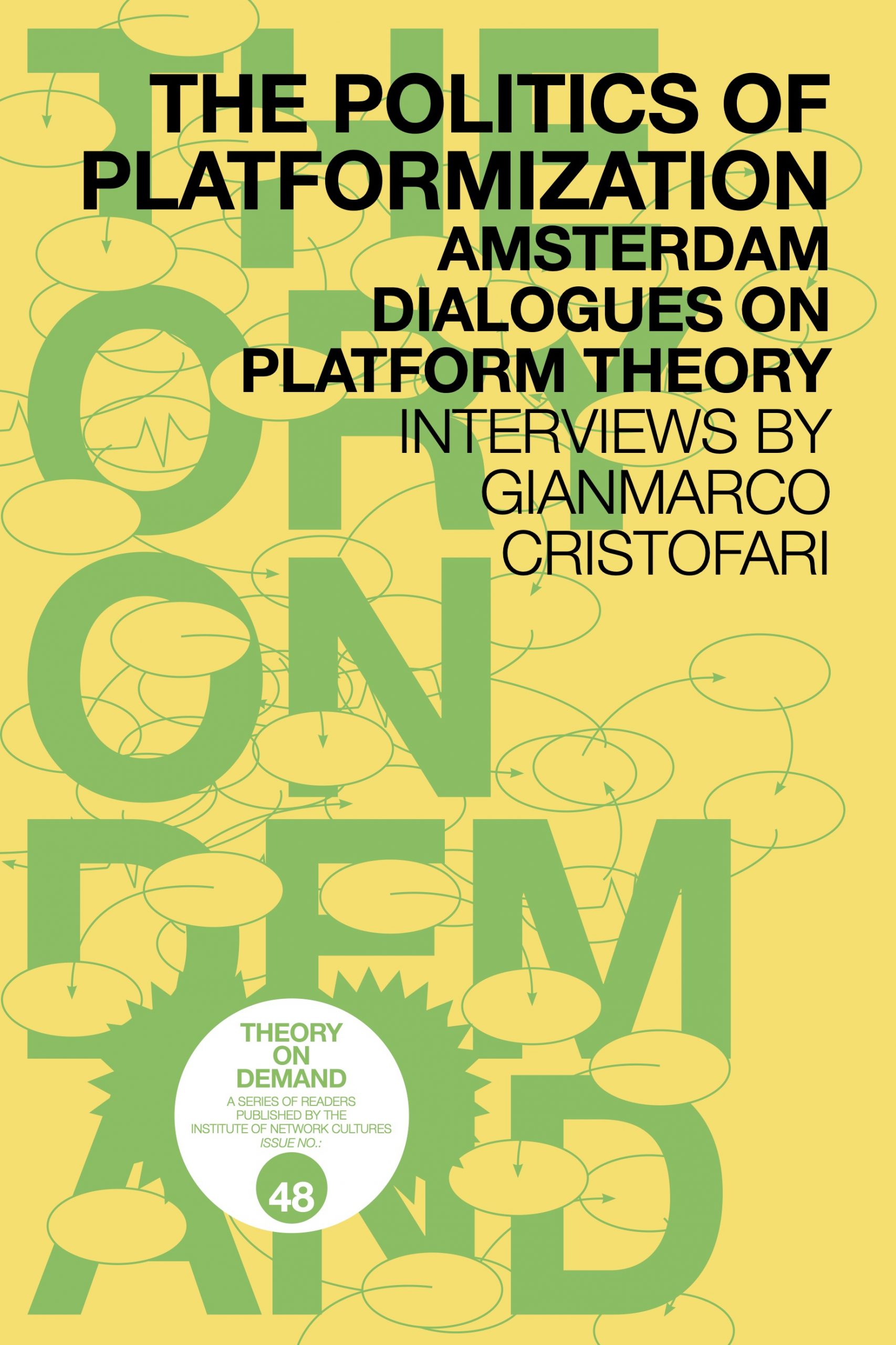
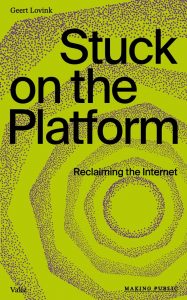
Stuck on the Platform
We’re all trapped. No matter how hard you try to delete apps from your phone, the power of seduction draws you back. Doom scrolling is the new normal of a 24/7 online life. What happens when your home office starts to feel like a call center and you’re too fried to log out of Facebook? We’re addicted to large-scale platforms, unable to return to the frivolous age of decentralized networks. How do we make sense of the rising disaffection with the platform condition? Zoom fatigue, cancel culture, crypto art, NFTs and psychic regression comprise core elements of a general theory of platform culture. Geert Lovink argues that we reclaim the internet on our own terms. Stuck on the Platform is a relapse-resistant story about the Brexit-Trump-Covid period (2019-2021), written for those with a passion for platform alternatives, built on a deep understanding of the digital slump.
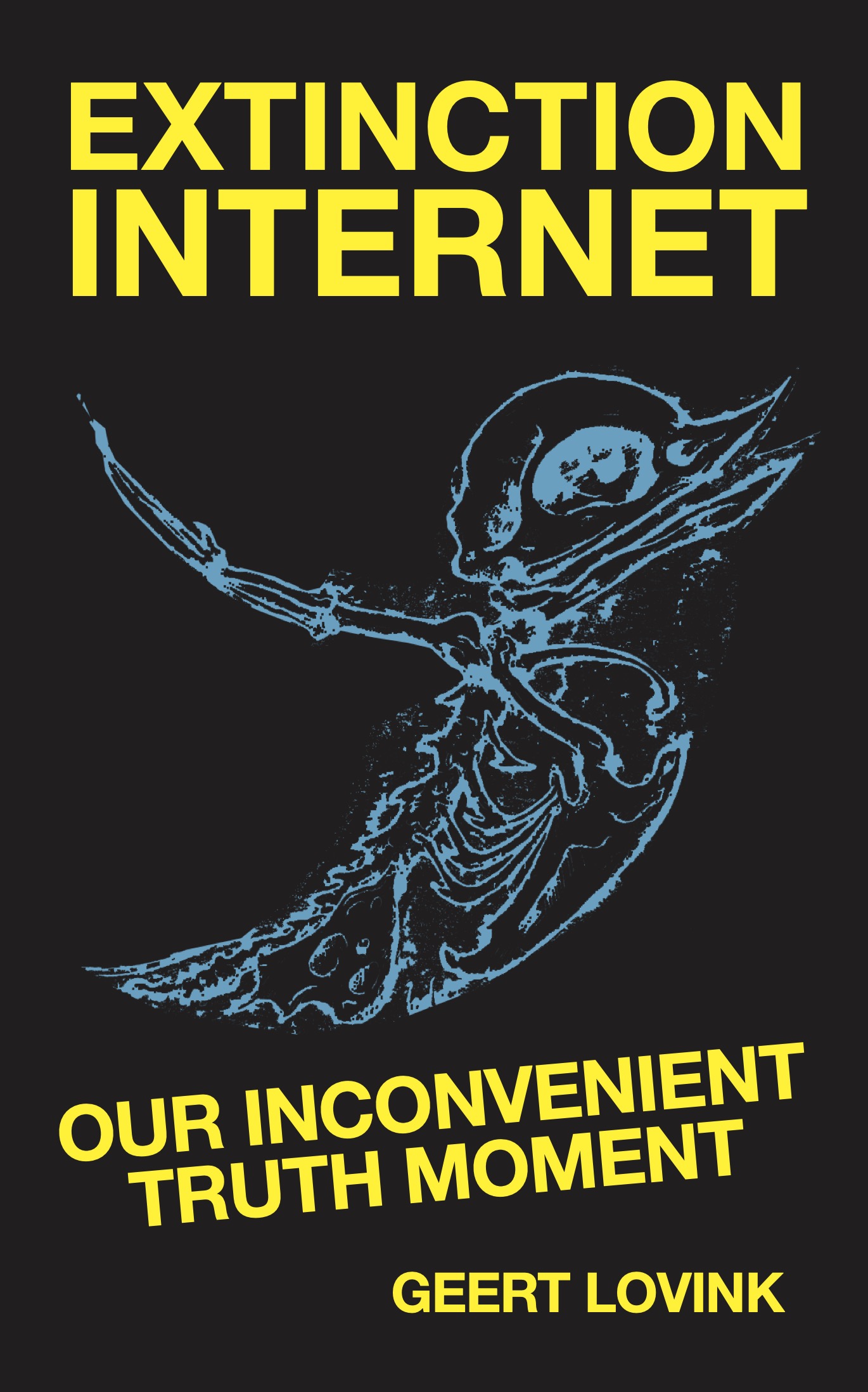
Platformizace
Platform Capitalism
Network effect
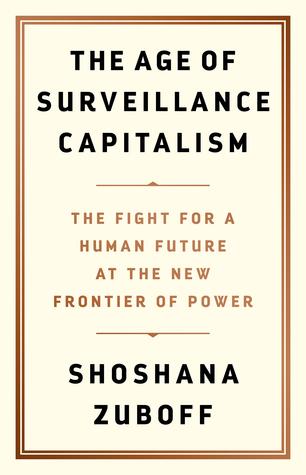
In trying to define what Web 2.0 is, it is safe to say that most of the important develop- ments have been aimed at enabling the community to create, modify, and share content in a way that was previously only available to centralized organizations that bought expen- sive software packages, paid staff to handle the technical aspects of the site, and paid staff to create content which generally was published only on that organization’s site.
Inkluzivita
Dobývání trhu
If Web 2.0 means anything at all, its meaning lies in the rationale of venture capital.
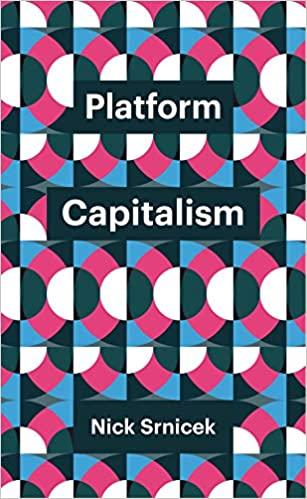
The use of web applications to replace desktop software is even more significant for the user when it comes to content that is not merely textual. Not only can web pages be cre- ated and edited in the browser without purchasing HTML editing software, photographs can be uploaded and manipulated online through the browser without expensive desktop image manipulation applications. A video shot on a consumer camcorder can be submit- ted to a video hosting site, uploaded, encoded, embedded into an HTML page, published, tagged, and syndicated across the web all through the user’s browser.
Storíčka - FB, IG, Twitter...
Kde je ona inovativnost kapitalismu, kterou má konkurence přinášet?
Surveillance Capitalism
Terminál
Byznys logika
Trivialita služeb
Empowering the Users
Duplicita, redundance
Web 1.0. charakterizuje závod investorů v budování materiální infrastruktury a v poskytování licencovaného zpoplatněného software-u velkými vývojářskými společnostmi, které prostřednictvím umu zaměstnanců generují svou hodnotu.
Outsourcing
Hype
Web 2.0 emerged as a venture capitalist’s paradise, where investors pocket the value produced by unpaid users, ride on the technical innovations of the free software move- ment, and kill off the decentralizing potential of peer-to-peer technology.
Exkluzivita
Marketing
informace
Software as a service (SaaS)
Námi produkovaný obsah (na sociálních sítích, službách pro sdílení videa ...) je monetizován a přetaven do zisku investorů, kteří více než do vývoje investují do marketingu s cílem budovat kolem svých často triviálních služeb "hype".
Profesionalita
Prosumer = Consumer + Producer
Vzniká vysoká míra komerce vlivem a myšlením kapitalismu, aby uživatel nikdy nemusel odejít od PC a majitel maximalizoval zisk.
Extrakce dat
Profit driven censorship
AOL
AOL (stylized as Aol., formerly a company known as AOL Inc. and originally known as America Online) is an American web portal and online service provider based in New York City. It is a brand marketed by Yahoo, Inc..
reklama
data
Naprosto souhlasím s tvrzením, že dnes vytvářejí hodnotu jednotlivých stránek uživatelé, kteří na ní vkládají obsah a používají ji namísto organizace, která stránku vlastní a programátorů, kteří stránku vytvořili.
V éře webu 2.0. je naproti tomu hodnota generována námi, uživateli často zdarma distribuovaných, webových aplikací, které mají své kořeny v éře webu 1.0.
Kontrola a manipulace
CompuServe
CompuServe dominated the industry during the 1980s and remained a major influence through the mid-1990s. At its maximum during the early 1990s, CIS was known for its online chat system, message forums for a variety of topics, extensive software libraries for most personal computers, and a series of popular online games, notably MegaWars III and Island of Kesmai. It was known also for its introduction of the GIF format for pictures and its system for exchanging GIF files. In 1994, it was described as "the oldest of the Big Three information services (the others are Prodigy and America Online)".
the Big Three
Monetizace
centralizované služby
Web 1.0
Hodnota vytvářená uživatelkami
„The Social Dilema“ - dokument od Netflixu
https://www.thesocialdilemma.com/
Profit capture
Web 2.0
Termín Web 2.0 poprvé použila Darcy DiNucci v roce 1999 ve svém článku "Fragmented future":
"Web, jak ho známe teď, který se jako statický text načte do okna prohlížeče, je jen zárodek webu, který přijde. První záblesky Webu 2.0 se již začínají objevovat a my sledujeme, jak se toto embryo začíná vyvíjet. Web bude chápán ne jako obrazovky plné textu a grafiky, ale jako prostředí, jako éter, jehož prostřednictvím dochází k interaktivitě. Objeví se na obrazovce počítače, na televizním přijímači, na palubní desce, na mobilním telefonu, na herní konzoli, a možná, že i na vaší mikrovlnné troubě."
O rozšíření povědomí o tomto termínu se zasloužila “Web 2.0 Conference", první konference zabývající se tématem Webu 2.0, pořádaná O’Reilly Media a MediaLive 5. října 2004 v San Franciscu. Zde John Battelle a Tim O’Reilly definovali pojem “Web jako platforma“, kde softwarové aplikace jsou postaveny na webu, nikoli na ploše. Předložili zde také myšlenku, že činnost uživatelů generující obsah (například ve formě textů, obrázků, videí, nebo nápadů) může být využita pro vytváření různých hodnot a uvedli, že unikátní na Webu 2.0 je například to, že váš byznys pro vás mohou budovat sami zákazníci.
Webové služby jsou čím dál tím více centralizované, kontrolované a náš obsah není vlastněn ani zhodnocován námi samotnými.
Dokud bude kapitalismus financovat internet, nemůže být svobodný. Ovšem chudý internet, je to možný?
Dotcom bubble
Typický dot-com se nesnažil generovat zisk, nýbrž získávat trh a zákazníky na dobu, až bude Internet rozšířen jako masmédium. Na růst firmy se použily peníze od investorů s cílem prodat firmu na burze dříve, než dojdou investice. Odhaduje se, že v letech 1998 až 2000 se do internetových projektů investovaly 2 miliardy dolarů ročně. Tržní hodnota akcií Yahoo! byla v únoru 2000 vyšší než tržní hodnota šesti největších vydavatelských domů dohromady. Analytikové tehdy začínali varovat, že akcie jsou silně nadhodnoceny. Investoři souhlasili, že k určitému pádu akcií dojde, ale investovali dál.
Během února a března roku 2001 dramaticky poklesly ceny prakticky všech akcií technologických webových firem. Pouze část společností dokázala přežít až dodnes. Příkladem firmy, která funguje dodnes, je Yahoo.com, jejíž akcie klesly z hodnoty 200 dolarů (prosinec 1999) na hodnotu 12 dolarů (březen 2001). Obecně přežily jen takové firmy, které dokázaly i během investiční horečky generovat alespoň nějaký zisk a dramaticky omezily spotřebu (zejména redukováním stavů zaměstnanců).
Prodigy
Prodigy Communications Corporation (Prodigy Services Corp., Prodigy Services Co., Trintex) was an online service from 1984 to 2001 that offered its subscribers access to a broad range of networked services, including news, weather, shopping, bulletin boards, games, polls, expert columns, banking, stocks, travel, and a variety of other features.
Vlastnické zájmy
Tak se ze sdíleného veřejného bohatství stal zdroj soukromého zisku.
1980s
1990s
obsah
Capitalism, rooted in the idea of earning income by way of idle share ownership, re- quires centralized control.
Práva jednotlivce na svá data
Etické aspekty
The mission of Web 2.0 is to destroy the P2P aspect of the internet and to make you, your computer, and your internet connection dependent on connecting to centralized services that control your ability to communicate. Web 2.0 is the ruin of free, peer-to-peer systems and the return of monolithic online services.
Figma
Stačí nám právo neprodávat svá data, pokud se jej většina spolčnosti zřekne?
nahrazování centralizovanými webovými službami
2000s
Google Docs
Server-client model
However, soon enough the Web, funded by venture capital, would move in to make websites operated by large corporations the primary online social platforms. The internet itself would soon disappear behind the Web, and users would never again leave their browser.
3. vlna: centralizace výpočetní síly skrze cloud computing
Cenzura
Additionally, legislation, such as the ‘Telecoms Reform Package’ 22 presented to the European Parliament, seeks to make it possible for service providers (large telecommunications conglomerates) to decide which websites their us- ers are able to access. Capital is showing us their vision of the future of the internet, and the future looks a lot like CompuServe: monolithic, centralized, mediated, controllable and exploitable, and naturally, operated by a few large corporations.
Centralizace
2010s
Discord
Kdo z toho profituje?
2. vlna: centralizace webových služeb
Jednotlivec vs. celek
Problém je dle Kleinera obsažen ve vlastnické struktuře Webových služeb.
1. vlna: centralizace připojení
Decentralizované služby
mail
2020s
Facebook jako šikanující manžel
FB není práce, protože nevyděláváme
IRC
Jaké distribuované služby známe?
Federated networks
A federation is a group of computing or network providers agreeing upon standards of operation in a collective fashion.
FB jako prostředí, které svou neviditelnou prací udržujeme ve funkčním stavu, aby někdo jiný mohl profitovat
FB není služba, protože za ni neplatíme
Parler

Peer to Peer
Peer-to-peer (P2P) computing or networking is a distributed application architecture that partitions tasks or workloads between peers. Peers are equally privileged, equipotent participants in the network. This forms a peer-to-peer network of nodes.
Soukromé vlastnictví
Nové způsoby výroby vlastněné všemi a přitom nikým
TOR
P2P služby, jaké známe?
Dne 8. ledna 2021, ve stejný den, kdy byl zablokován účet Donalda Trumpa a několika jeho spojenců na Twitteru z obav o podněcování násilí, odstranil Google mobilní aplikaci Parler z Google Play; uvedeným důvodem byly chybějící zásady pro moderování obsahu, bránící šíření nenávistných příspěvků.[1] Podobné výhrady vyjádřil i Apple, který zprvu pohrozil stažením z App Store[12] a po dvou dnech platformu Parler odstranil také.
Následovalo oznámení Amazonu, že o půlnoci z 10. na 11. ledna 2021 odstraní Parler ze svého hostingu Amazon Web Services, což se také stalo. Jelikož služba byla odmítnuta i ze strany dalších webhostingových společností, od tohoto data byla nedostupná.[1][3] Zakladatel Parleru John Matze označil postup těchto firem za „koordinovaný útok technologických gigantů“ a hromadné odmítnutí služby ze strany všech jím oslovených společností kritizovali i další američtí komentátoři.
Usenet
Usenet (/ˈjuːznɛt/) is a worldwide distributed discussion system available on computers. It was developed from the general-purpose Unix-to-Unix Copy (UUCP) dial-up network architecture. Tom Truscott and Jim Ellis conceived the idea in 1979, and it was established in 1980. Users read and post messages (called articles or posts, and collectively termed news) to one or more categories, known as newsgroups. Usenet resembles a bulletin board system (BBS) in many respects and is the precursor to Internet forums that became widely used. Discussions are threaded, as with web forums and BBSs, though posts are stored on the server sequentially.

BitTorrent
Seeder
Commons
občina, obecně sdílené statky, společné sdílené statky
Text je obhajobou peer-to-peer sítí – imateriálních ale rovněž tak i materiálních. Právě aplikace peer-to-peer způsobu uspořádání produkce v materiální realitě umožňuje rozvinutí potenciálu peer-to-peer. Tím je sdílení produkčních prostředků a výrobků mezi stejně postavenými členy tak imateriální jako i materiální sítě.
Plaform cooperativism
Bez implementace materiální vrstvy sítě nelze mluvit o peer-to-peer uspořádání ale jen o financování iluze sdílených sítí "zvenčí", z jiného typu uspořádání produkce.
Peer-production
Třídní perspektiva
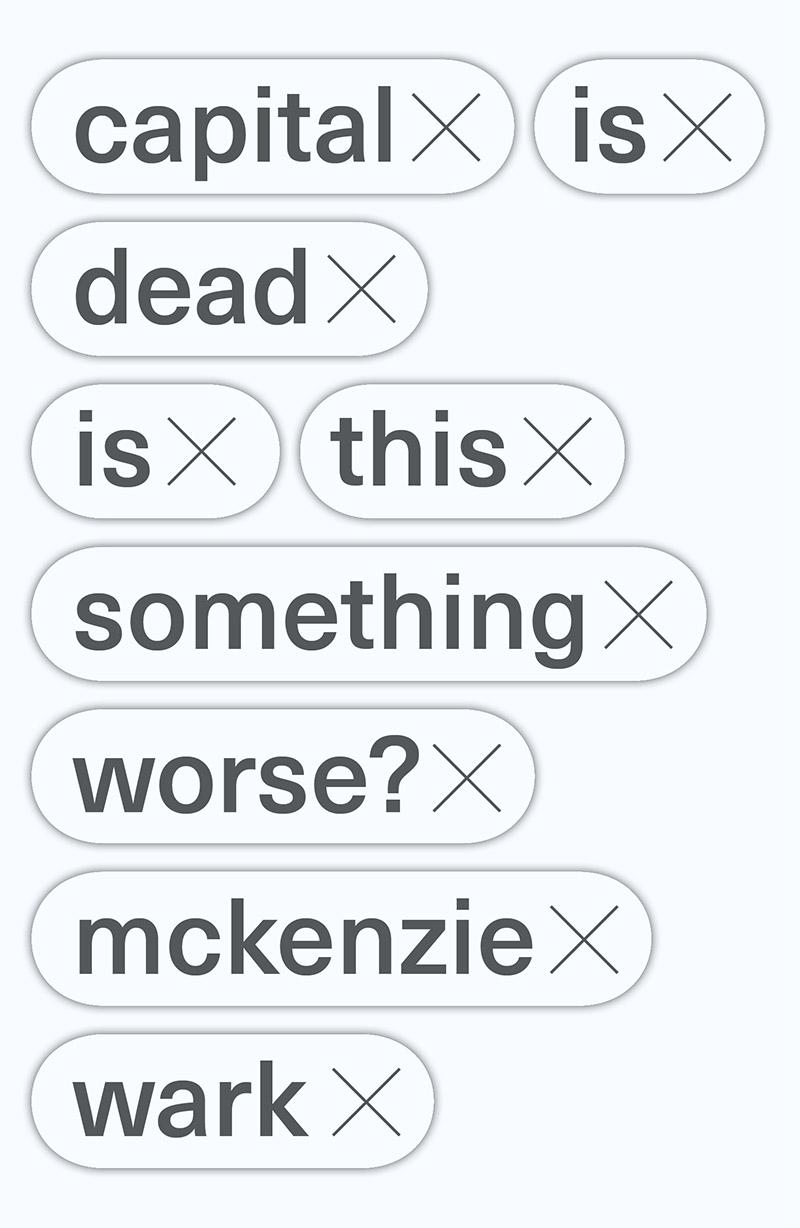
Open source
Something with no reproduction costs can have no exchange-value in the context of free exchange. Anybody who wants a copy can obtain one from anybody that has one. But if what they produce has no exchange-value, how can the peer producers be able to acquire the material needs for their own subsistence?
Copy-left
Landless proletariat
Creative Commons
Jak odměňovat pracovnice?
Info-landlords
Copy-farleft
Web 3.0
Informace je materiální
Používáte nějaké decentralizované služby?
Nové decentralizované služby
Material P2P
Blockchain
Rozšiřování P2P and commons logiky mimo imateriální sféru
Urbit OS
https://urbit.org/
Koncept: Local-First Software
In this article we propose “local-first software”: a set of principles for software that enables both collaboration and ownership for users. Local-first ideals include the ability to work offline and collaborate across multiple devices, while also improving the security, privacy, long-term preservation, and user control of data.
https://www.inkandswitch.com/local-first/
Společný fond výrobních prostředků
wiki
jaké v příkladech Kleinera?
open source